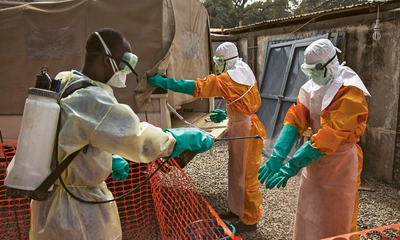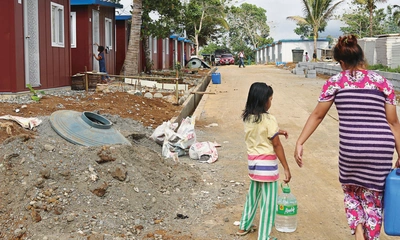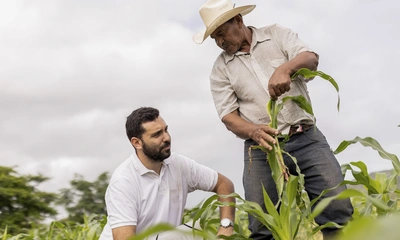A Pragmatic Approach to the Triple Nexus
The Humanitarian-Development-Peace Nexus has become a guiding principle for international cooperation. To gain deeper insight into what this “triple nexus” entails in practice, Unité commissioned a study on its application within its member organisations and their partners in the global South.
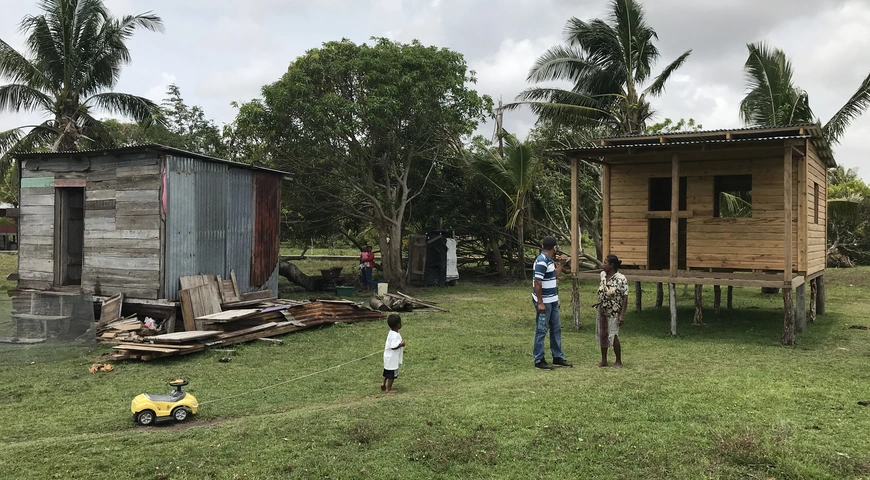
Dr. Oliver Jütersonke has a long track-record working as triple nexus specialist for a variety of multilateral and bilateral aid agencies, state authorities, and civil society. Unité was fortunate to have him author this study, based on extensive document analysis, survey questionnaires, and in-depth interviews with respondents from across our networks. The following interview explores the most important concepts, findings and recommendations of the study.
Can you give us a short definition of the Triple Nexus?
Oliver Jütersonke: The triple nexus refers to the linkages between the humanitarian, development, and peace (or peacebuilding) spaces. Essentially, it is call for greater alignment across these three areas of programming, particularly as they increasingly operate in parallel within complex settings marked by both human-made conflict and natural disasters. It encourages organisations to be more aware of one another – not necessarily to blur mandate boundaries or pursue the same objectives, but to coordinate more closely, improve coherence, and build on complementarities in order to increase the efficiency and effectiveness of aid delivery.
In your study, you make a case for more “Nexus Thinking” and “Conflict-Sensitive Programme Management (CSPM)”. What is the difference between those two?
I use the term “nexus thinking” to suggest that development, humanitarian and peacebuilding actors don’t necessarily need expand their programming portfolios – but they do need to recognise that, in today’s protracted crises, their work is a part of a broader puzzle. You can’t do “traditional” development cooperation in a conflict-affected setting marked by mass displacement and increasingly extreme weather patterns linked to climate change.
In this context, conflict sensitivity is the glue that helps hold the pieces together. It prompts us to ask: how do my organisation’s interventions relate to those of other actors in the H-D-P space? The analytical tools offered by CSPM can help us ask the rights questions – and find simple, day-to-day ways to address them in practice.
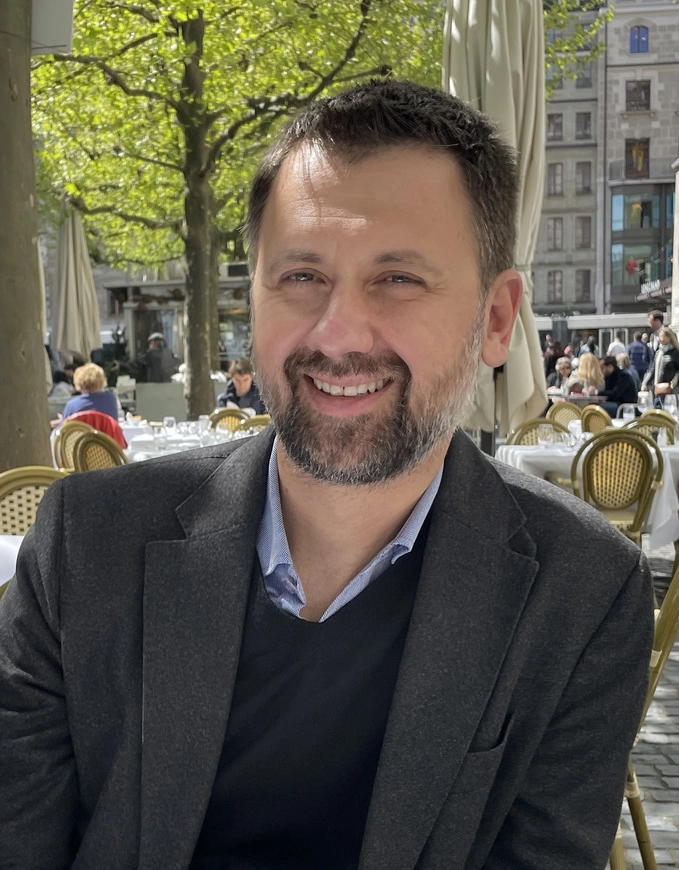
Does this mean you are arguing for the systematic integration of CSPM into development programmes and projects? Would this not disproportionately increase the administrative burden that is already a challenge, especially for smaller NGOs?
Most donor agencies – including the Swiss Agency for Development and Cooperation (SDC) – have long called for the mainstreaming of CSPM, so the topic itself is not new. It often sits alongside other cross-cutting themes such as “leave no one behind” (LNOB), gender responsiveness, and triple nexus considerations – and yes, for smaller organisations, this can feel overwhelming at first.
What I suggest in the study is that these topics are not separate boxes to tick; they are deeply inter-related and can reinforce one another. More importantly, they should not be viewed as reporting chores to be addressed once or twice a year to satisfy donor requirements. On the contrary: a conflict-sensitive mindset can become part of everyday work, on all levels.
When simple conflict analysis tools are integrated into staff meetings or regular situational updates, for example, you’re already encouraging “nexus thinking” – mapping the actors in your environment, identifying dividers and connectors, and reflecting on how your work interacts with others in the humanitarian, development and peace spaces.
What are the most important findings of the study?
One of the central insights relates directly to what we just discussed: conflict sensitivity is already being practiced – especially by in-country staff, volunteers, and local partners – but it is often not formalised or labelled as such. When prompted, respondents were able to provide rich, detailed accounts of the conflict dynamics they navigate. However, these situational reflections are rarely referred to as “CSPM” and are not systematically captured in programme planning or reporting documents.
In this sense, one major finding concerns the jargon: the concepts behind “CSPM” and “nexus thinking” are already part of everyday practice – just not consciously framed that way. You might have a local partner working closely with humanitarian organisations to support flood victims, or a religious leader helping mediate family disputes within a parish. But when asked them about “the triple nexus”, they might simply reply: “never heard of it.”
The study also highlights the need to adjust reporting practices – and even reporting templates – to better capture these kinds of micro-level activities. Many of the themes uncovered relate directly to SDG 16 on peaceful, just and inclusive societies. Yet few of Unité’s member organisations systematically report on SDG 16. Sometimes this is because their programming focus lies elsewhere; other times it’s due to limited staff capacity or uncertainty around how to measure peace-related outcomes – especially at the so-called “systemic” level. As a result, a great deal of valuable, nexus-relevant work risks going unreported or under-recognised.
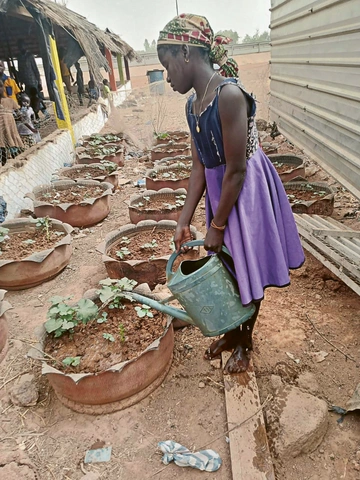
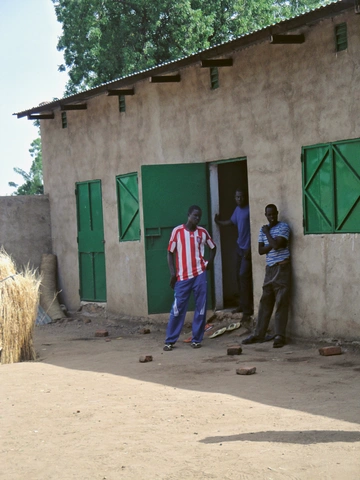
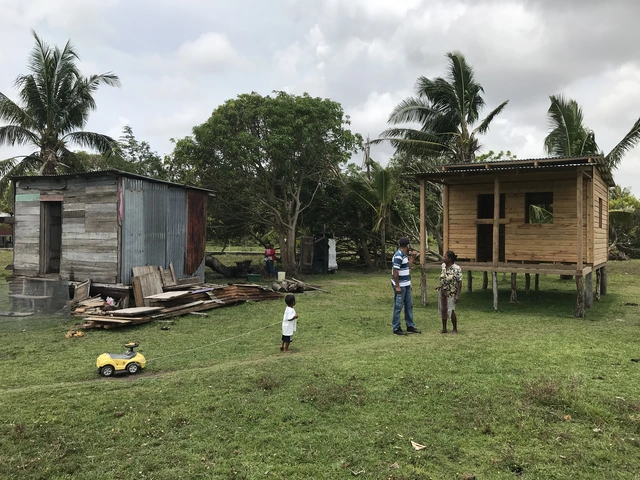
And what recommendations can be derived from this?
The study intentionally avoids prescribing formal “recommendations” and instead puts forward a series of modest “action points” – aimed at Unité, its member organisations (of varying sizes), and its wider network of in-country partners. Among the most important is the call to integrate regular actor mapping and basic situational analysis into day-to-day organisational routines. As mentioned earlier, conflict sensitivity does not require heavy, data-intensive exercises that take weeks to complete. Instead, it can be adopted as a shared mindset – embedded in staff meetings, check-ins with country partners, and exchanges with professional volunteers.
This kind of situational awareness is also a key enabler of what I describe as “nexus thinking”: a way of remaining attuned to how different actors and interventions interact across the humanitarian-development peace (H-D-P) spectrum. It also strengthens the case for recognising and valuing micro-level, locally driven contributions – many of which are meaningful but currently fall outside the scope of standard development reporting.
What is the link between the Triple Nexus and locally led development?
Both concepts rest on the premise that top-down aid delivery is inadequate – and often counterproductive – in protracted crisis settings where humanitarian, development, and peace actors operate simultaneously, but not always in a coordinated way. The localisation agenda (across all three sectors) underscores the central role of national and sub-national actors in navigating complex environments and shaping context-specific responses.
The more fragile the setting, the more crucial it becomes to support partner organisations as sovereign decision-makers – equipped to manage evolving dynamics and adjust strategies accordingly. “Nexus thinking” reinforces this shift by encouraging collaboration, adaptive programming, and long-term investments in local capacities.
Although both concepts emerged from multilateral efforts to enhance the effectiveness and efficiency of aid – and are therefore sometimes dismissed as donor-driven or instrumentalised jargon – they ultimately aim to promote local ownership and empower context-rooted actors and stakeholders.

